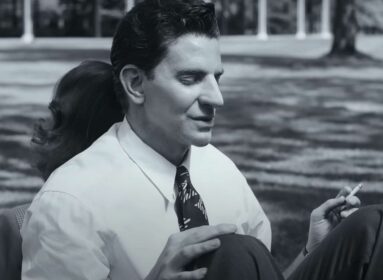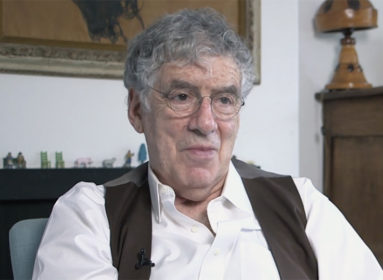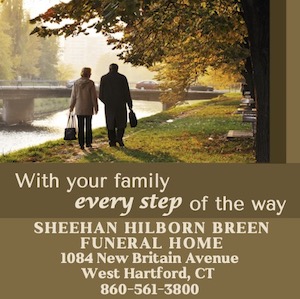
Jewish Ledger | 5-13-11
NEW HAVEN – Eight years ago, the fate of the 85-year-old Orchard Street Shul, once the anchor of the Oak Street-Legion Avenue Jewish neighborhood of New Haven, was unknown. The building was in disrepair and had been barely used since the ’80s. There was talk of selling.
Last September, a new board was elected and the synagogue once again opened its doors.
Programming is still light but creative – hopeful signs of rebirth. There were High Holiday services last fall, study sessions, lectures and a photography show. On May 22, the shul will host a Gala Retro Bar Mitzvah.
The idea for the event came about at a December board meeting, when trustee Sherman Jacobson suggested that the shul host a reunion of sorts for all those who had celebrated their bar mitzvah there, since the building opened in 1924.
Several board members formed a planning committee, headed by Roz Croog. Barry Vine joined the effort and, says Croog, “has been wonderfully instrumental in pushing this forward; he’s a driving force behind the success of the shul and where we are today.” Rabbi Mendy Hecht proposed May 22, to coincide with Lag B’Omer this year.

The 85-year-old Orchard Street Shul
So far, the committee has heard from nearly 35 “Bar Mitzvah Boys,” some from as far away as California and Florida, and many in their 70s and 80s. At the ceremony, each of these honored guests will have the opportunity to reflect on his experience at the shul, way back when.
The last bar mitzvah took place at the shul 25 or 30 years ago, says current president Lee Liberman. “I’m really so pleased that we’ve gotten such a reaction,” he says of the response to the event. “I’ve talked to a lot of the boys by phone, and they all have such fond memories of the synagogue while they were growing up.”
The “Orchard Street Shul” is home to Congregation Beth Israel, founded by a small group of observant Jews In 1913 who first rented a storefront on Asylum Street. Two years later, the fledgling congregation moved to a remodeled residence at 147 Orchard St. A steady influx of Jewish immigrants to New Haven brought more members and by 1923, the congregation had again outgrown its space. In July of that year, Beth Israel’s officers purchased land and property at 232 Orchard St., the synagogue’s present location, for $12,000.

The last bar mitzvah took place at the shul 25 or 30 years ago.
Liberman settled in the city in 1946, after being discharged from the U.S. military. The Springfield, Mass. native had married a local girl during the war, and he and Lil joined the Orchard Street shul in 1947.
“For the next 10 years, I remember it as the busiest synagogue in the area,” he says. “They had to hire police to turn people away during High Holiday services.”
Liberman served as president for four years in the mid-’90s, just before the shul closed its doors for about a decade. He resumed the leadership position last September.
The Colonial Revival-style yellow-brick synagogue was built by C. Abbadessa & Bros., Inc., from the design of architect Louis Abramowitz, and dedicated in 1926. The building is listed on the Connecticut State Register of Historic Places, “discovered” as part of a 1991 Connecticut Historical Commission architectural survey of Connecticut synagogues built between 1840 and 1940. It was added to the National Register of Historic Places in 1995, the only structure of its kind still standing in the greater New Haven area.
The building, with Moorish domes atop twin towers, has the traditional layout of an Orthodox synagogue, with the women’s section on a second-floor balcony overlooking the men’s section and central bimah.
In the ’60s and ’70s, as Jews left New Haven for the nearby suburbs, and elder members died off, activity and need waned. By the late ’90s, there were only 100 or so members, all elderly, who would hold the occasional morning minyan in the building’s basement. Diehard supporters and the Cultural Heritage Artists Project worked to preserve the landmark and keep it relevant to the Jewish community.
With the extensive Frontage Road development now on the drawing board, Liberman says that an influx of professionals is expected over the next several years, perhaps bringing new members to the shul or least renewed interest.
“That’s the reason I want to hold onto the building for the future,” he says. “I would like future generations to be able to see what the old-fashioned Orthodox synagogue was like.”
Throughout its history, the congregation has been sustained by three generations of rabbis from the Hecht family. Current spiritual leader, Rabbi Mendy Hecht, succeeded his father, Rabbi Emeritus Sheya Hecht, and his grandfather, Maurice Hecht, who served as rabbi for 45 years.
Ed Pinn is a member of the Gala Retro Bar Mitzvah planning committee. His paternal grandparents, Anna Rose and Michael Pinn, were founding members of the shul, and he celebrated his bar mitzvah there.
“My grandparents lived at 75 Sherman Ave., a few short blocks from the shul, and we would walk from our home on Hotchkiss Street to my grandparents’ for a quick visit before making our way down Gilbert Avenue to Orchard Street,” Pinn recalls. In the mid-’50s, the family moved to Boulevard between Whalley Avenue and Goffe Street. His father, David, would still walk to synagogue, well into his 80s.
“Our seats in shul were to the right and slightly behind the bimah,” Pinn says. “During the High Holidays, the place was packed! Children did not have their own seats. I squeezed in between my father and Uncle Abe or Uncle Willie and can still remember the aroma of all those many congregants on a hot Yom Kippur morning. My mother Laurette (Fromer), sister Helen-Ruth, and grandmother were easy to spot in the front row of the balcony. I still hear the Kohanim, each head covered with a large black-and-white tallit, prostrate on the front bimah, blessing the assembled.”
Fellow planning-committee member Alan Ruditzky spent his first five years at 35 Legion Ave. with his parents and maternal grandparents. “The apartment was a typical third-floor walk-up but it was home,” he says. “Legion Avenue bustle, with the shops and the people, was my universe and still is, if only in my thoughts and memory.
“When I turned 5, my parents, sister Arlene, and I moved to 48 Button St., where we lived until I was in high school; Bubbe and Zayde stayed at 35 Legion Ave. I attended Hebrew school next door to their apartment, where I was taught by Rabbi Maurice Hecht, his wife, and others. I remember getting off the school bus on those days onto Legion Avenue and bounding up the stairs to say hello to my Bubbe and Zayde. They would give me 10 cents and I then would go to Fox’s delicatessen to get a bag of fries, as I was usually starving! Hebrew school at that time was an after-school class two or three days a week. Here is where I first learned Hebrew, my Haftorah, and the basic tenets of Judaism – a solid basis for my growth in later years.”
For Ed Pinn, reaching his bar mitzvah was nothing less than “a miracle.”
“Dave Katz’s bus would pick us up at our respective elementary schools and deposit us at the Hebrew Day School on Dwight Street. Many of us were more interested in getting a bag of French fries from Fox’s Deli, or penny candies on Legion Avenue than learning Hebrew after a full day of public school,” he recalls. “After four or five years of afternoon Hebrew school, attending Shabbos services with my father, receiving support from Rabbi Maurice Hecht, and listening to a haftora record, I made my bar mitzvah on a September Saturday in 1953. The simcha was followed by dinner for family and friends at Flax’s Catering, a short walk from the shul.”
Ruditzky’s bar mitzvah was moved at the last minute from Orchard Street to the White Street Shul on June 7, 1958 – but his certificate still bears the name of the original location. “I continue to have fond and vivid memories of my bar-mitzvah observance,” he says. “The White Street Shul had a central bimah and was also Orthodox with separate seating,” Ruditzky recalls. “I can still remember walking to shul with my paternal Zayde Sam, who had come in from Brooklyn with my grandmother by train the day before to be with us. I also remember my mother sending my dad with the car to pick us both up because she was concerned about the walk for my grandfather. The whole family finally arrived for services and I completed my haftorah, gave my speech, and enjoyed the dinner and festivities at Flax’s Caterers in New Haven that evening. I still have the old 8-mm films from that wonderful time of family and observance enhanced forever with a sense of common love, common destiny, and reverence for each other.”
The Orchard Street Shul is still memorable, decades after the “Bar Mitzvah Boys” chanted Torah from the bimah. Those involved in the synagogue’s renaissance hope that this and future events will convey the special legacy of the building and its place in New Haven Jewish history.
“For me, the Orchard Street Shul evokes fond memories of family and religious observance,” says Ed Pinn. “The Retro Bar Mitzvah event provides an opportunity to generate renewed interest in the shul and hopefully others will be motivated to join us and support a renaissance of this wonderful New Haven landmark.”
The Gala Retro Bar Mitzvah Event will take place on Sunday, May 22, 11 a.m. at Congregation Beth Israel, “Orchard Street Shul,” 232 Orchard St., New Haven.For more information contact Lee Liberman at (203) 776-5093 or bubyzaide@aol.com
To learn more about the history and rebirth of the Orchard Street Shul visit www.orchardstreetshul.org
Photos by Roslyn Z. Croog








 Southern New England Jewish Ledger
Southern New England Jewish Ledger









